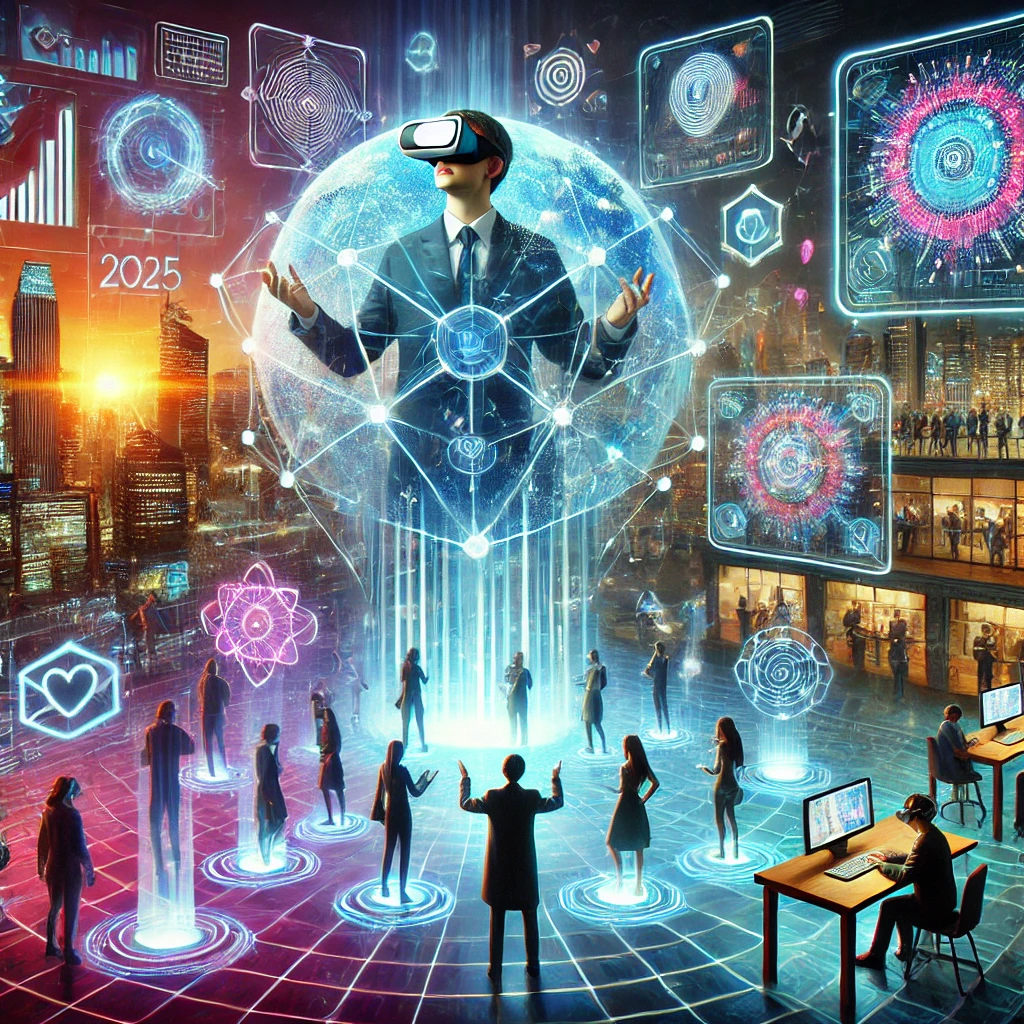Metaverse in 2025: How Virtual Worlds Are Reshaping Social and Work Life
The metaverse is no longer just a concept for gamers or tech enthusiasts—it is quickly becoming an integral part of our daily lives. By 2025, virtual worlds will profoundly influence how we socialize, work, and interact with the digital and physical realms. With technological advancements and growing adoption rates, the metaverse is set to redefine the boundaries of human interaction.
1. What is the Metaverse?
The metaverse is a network of interconnected virtual worlds where people can interact, work, and play through digital avatars. Powered by technologies such as augmented reality (AR), virtual reality (VR), blockchain, and artificial intelligence (AI), the metaverse offers immersive and interactive experiences that blur the line between the digital and the real.
2. Transforming Social Life
By 2025, social interactions in the metaverse will reach new heights. Here’s how:
- Virtual Events and Gatherings:
From weddings to concerts, people will attend events in virtual venues, eliminating geographical barriers. - Digital Identities:
Customized avatars will serve as extensions of ourselves, reflecting our personalities and preferences in virtual spaces. - Global Communities:
Language barriers will diminish with real-time AI translation, enabling seamless communication between people from diverse backgrounds.
Popular platforms like Horizon Worlds, Roblox, and Decentraland are already shaping these experiences, offering spaces where users can socialize, shop, and build communities.
3. Revolutionizing the Workplace
The metaverse is redefining the future of work, allowing for greater flexibility and collaboration:
- Virtual Offices:
Companies are adopting VR-powered meeting rooms where employees can interact in 3D spaces, increasing engagement and reducing travel costs. - Remote Collaboration:
Teams can work together on projects in virtual environments, using tools like AR overlays and holographic displays. - Training and Simulations:
Industries such as healthcare, engineering, and aviation are leveraging metaverse simulations for training, making learning more effective and risk-free.
Platforms like Meta’s Horizon Workrooms and Microsoft Mesh are leading this transformation.
4. Technological Advancements Driving the Metaverse
- Advanced VR and AR Devices:
Lightweight and high-performance headsets like the Meta Quest 4 and Apple Vision Pro are making immersive experiences more accessible. - Blockchain and NFTs:
Blockchain ensures secure ownership of digital assets like NFTs, which represent virtual goods, real estate, or collectibles in the metaverse. - AI Integration:
AI-driven avatars and virtual assistants enhance interactivity, creating lifelike interactions in digital spaces.
5. Challenges and Ethical Concerns
While the metaverse holds immense potential, it is not without challenges:
- Privacy and Security:
Protecting user data and preventing identity theft in virtual environments remain critical issues. - Digital Divide:
Access to the metaverse may be limited for those without high-speed internet or advanced devices. - Addiction and Over-Reliance:
Prolonged use of virtual worlds may lead to addiction or a detachment from the physical world.
6. The Future of the Metaverse
The metaverse is set to become a $1 trillion economy by 2030, driven by investments from tech giants and user adoption. By 2025, experts predict:
- Wider integration of AR and VR in daily life.
- Increased focus on sustainability in digital environments.
- Expanded opportunities for education, healthcare, and global collaboration.
Conclusion
The metaverse is more than just a technological breakthrough—it is a cultural shift. By 2025, it will reshape how we connect, work, and live, offering endless possibilities while posing challenges that require thoughtful solutions. The question isn’t whether the metaverse will change our lives, but how soon and to what extent.


